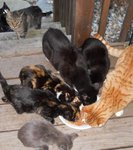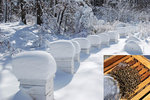PIKE COUNTY, PA — Calling all crazy cat ladies—and men! PAWS of the Hudson Valley/Pike County, an animal rescue group, is looking for people in the Matamoras/Milford/Shohola/Dingmans Ferry area to help with its Trap/Neuter/Release program. Help control the local cat population and stop the spread of disease.
Stay informed about your community and support local independent journalism.
Subscribe to The River Reporter today. click here
This item is available in full to subscribers.
Please log in to continue |


PIKE COUNTY, PA — Calling all crazy cat ladies—and men! PAWS of the Hudson Valley/Pike County, an animal rescue group, is looking for people in the Matamoras/Milford/Shohola/Dingmans Ferry area to help with its Trap/Neuter/Release program. Help control the local cat population and stop the spread of disease.
All food and supplies will be provided.
Adopters and foster pet parents are also needed.
For more information, visit PAWS of the Hudson Valley on Facebook or email pawshv@gmail.com.
YOUR LOCAL BEEHIVE — Agricultural Research Service (ARS) scientists and their Chinese colleagues have identified a specific metabolic pathway that controls how honey bees apportion their body’s resources—such as energy and immune response—in reaction to stresses such as winter’s cold temperatures.
The scientists recently published research detailing their findings.
It’s the strongest connection found so far to the large colony losses that have been plaguing overwintering honey bees, losses that have caused so much concern for beekeepers and farmers, during the last 15 years, said entomologist Yanping “Judy” Chen, who led the study. She is with the ARS Bee Research Laboratory in Beltsville, MD.
ARS is the U.S. Department of Agriculture’s chief scientific in-house research agency. Its research focuses on solutions to agricultural problems affecting America.
The “signaling” pathway governs the increased and decreased synthesis of the protein SIRT1, one of a family of proteins that help regulate cellular lifespan, metabolism and metabolic health, and resistance to stress.
“In honey bees… exposed to a cold challenge of 28 degrees Celsius (82.4 degrees Fahrenheit) for five days, we saw almost three-fold lower levels of SIRT1 and significantly higher levels of colony mortality, compared to bees maintained at 34-35 degrees Celsius (93.2 to 95 degrees Fahrenheit), which is the optimal core temperature of a honey bee cluster inside a beehive in winter,” Chen said.
The researchers also found that bees under cold stress were associated with an increased risk of disease infections, which in turn led to an increased likelihood of colony losses.
For example, when honey bee colonies were inoculated with the intracellular microsporidia parasite Nosema ceranae and kept at 34 degrees Celsius, the bees had a survival rate of 41.18 percent.
The mortality rate of the colonies exposed to the cold stress of 28 degrees Celsius for five days was 100 percent.
“So that showed it is primarily cold stress that the SIRT1 signaling pathway is responding to rather than pathogens,” Chen said. “Our study suggests that the increased energy overwintering bees use to maintain hive temperature reduces the energy available for immune functions, which would leave overwintering bees more susceptible to disease infections—all leading to higher winter colony losses.”
Chen points out this research also offers a promising avenue for new therapeutic strategies to mitigate overwintering and annual colony losses. The production of the SIRT1 protein could be raised by treating honey bees with SRT1720, a specific SIRT1 gene activator being experimentally used as an anti-inflammatory and anti-cancer treatment.
Story contributed by ARS.
Comments
No comments on this item Please log in to comment by clicking here